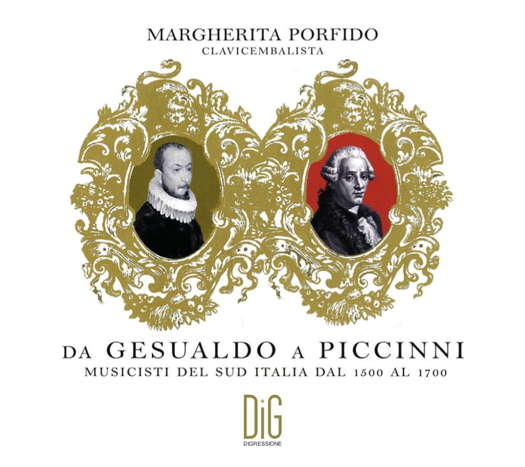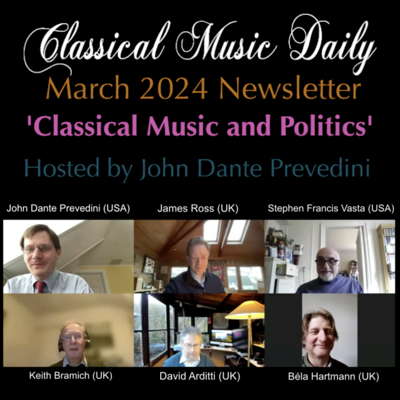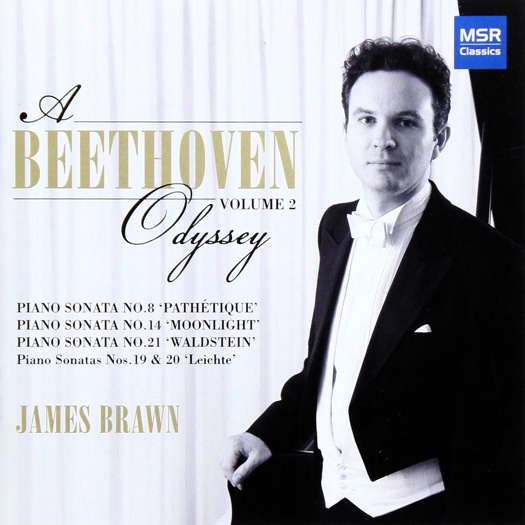- Moszkowski
- Catharine Crozier
- Raphael Sommer
- Dido
- Lowell Liebermann: Frankenstein
- Alex Wyatt
- Michael Gibson
- Shostakovich: Piano Concerto No 2

The Joy of Harpsichord
Margherita Porfido plays music from the south of Italy, heard by GIUSEPPE PENNISI
'... fundamental to the understanding of music between the sixteenth and eighteenth centuries in southern Italy.'
This is a very interesting box for two reasons. It deals with little known, and seldom performed, music from Southern Italy, mostly from Apulia, from the sixteenth to the early eighteenth century. It contains scores originally composed for harpsichord (or for organ) as well as musical paraphrase transcriptions for compositions initially conceived for madrigal groups and alike.
The performer is Margherita Porfido, who started a career as a pianist but then, since 1983, has devoted herself nearly entirely to the harpsichord. Her repertoire includes Renaissance and Baroque music (mainly of Italian authors) as well as modern and contemporary music - Petrassi, Portari, Malipiero and Poulenc. She mostly prefers compositions written for the solo instrument, but she also plays with chamber and symphony orchestras, generally as a soloist. More than forty contemporary composers have dedicated works to her. She teaches piano at the Niccolò Piccinni Conservatory of Bari.
This boxed set collects the jewels of the music of the Southern Italy School for harpsichord, starting from its founder Carlo Gesualdo, Prince of Venosa, up to Niccolò Piccinni, great opera composer and reformer of Italian opera. A path that weaves the history of Southern musicians, who saw in Naples their great cultural capital, a spring-board to take flight and cross the Italian borders and take their music throughout Europe. Often forgotten, the musicians contained on this double CD show a great artistic vein and a strong and very personal musicality, which still enchants the attentive listener; they are: Gesualdo da Venosa, Rocco Rodio, Antonio Valente, Giovanni Maria Trabaci, Giovanni Salvatore, Bernardo Storace and Niccolò Piccinni.
The two CDs are different in that CD A is an anthology from Prince Gesualdo da Venosa (1560-1613) to Antonio Valente (sixteenth century – there is no clear information of his dates of birth and of death). CD B is entirely devoted to the only compositions for harpsichord by Niccolò Piccinni - three Sonatas and a Toccata - which were published in Paris in 1775, preceding his arrival in the French capital by one year. CD A is almost a historical introduction to CD B; it summarizes the avenue from early seventeenth century to the end of the eighteenth century.
It starts with Canzon francese del Principe by Gesualdo da Venosa. In this magazine, we have often discussed Gesualdo's complicated life and innovative music. This short piece was written for attiorbato lute, most probably not for harpsichord. However, the harpsichord rendering fully shows Gesualdo's innovative chromatic writing.
Listen — Gesualdo: Canzon francese del Principe
(DCTT123 CD A track 1, 2:10-3:05) ℗ 2007 Terra Gialla, 2021 Digressione :
There are, then, two pieces by Rocco Rodio (1530/40-1615). The first is Salve Regina, most likely originally composed for organ. The second is Fantasia sopra LA MI RE FA MI RE (also called La Bassa Castiglia ovvero il Re di Spagna).
Listen — Rocco Rodio: Fantasia sopra LA MI RE FA MI RE
(DCTT123 CD A track 3, 0:00-0:43) ℗ 2007 Terra Gialla, 2021 Digressione :
They are a lace of elegance and sophistication as would fit a civilization that had the Court and aristocracy as its focal point and its main consumer of music.
The Canzone francese settima cromatica by Giovanni Maria Trabaci (1575-1645) is an ambiguous parody of French songs based on the perfection of details.
Listen — Giovanni Maria Trabaci: Canzone francese settima cromatica
(DCTT123 CD A track 4, 2:06-2:40) ℗ 2007 Terra Gialla, 2021 Digressione :
On a similar line is the Canzone francese terza del primo tuono finto by Giovanni Salvatore (1610-1688). Here humour and parody are more accentuated than in Trabaci's. Initially composed for four voices and organ, the paraphrase transcription for harpsichord underlines the masks' march quite joyfully and quite well.
Very little is known about the life of Bernardo Storace. CD A has three pieces. Clearly, Storace's main interest is the variation form. In Partita sopra il cinque passi, there are fifteen variations on a six-bar theme, connected by brief transitions.
Listen — Bernardo Storace: Partita sopra il cinque passi
(DCTT123 CD A track 7, 4:33-5:13) ℗ 2007 Terra Gialla, 2021 Digressione :
Antonio Valente's Il ballo dell'intorcia, full of variations, is a lovely piece, most likely originally written for organ.
Listen — Antonio Valente: Il ballo dell'intorcia
(DCTT123 CD A track 10, 0:00-0:32) ℗ 2007 Terra Gialla, 2021 Digressione :
The splendid Three Sonatas and a Toccata by Niccolò Piccinni - the composer's only works for harpsichord - are quite well known. In my view, the real masterpiece is Sonata No 2.
Listen — Niccolò Piccinni: Menuetto (Sonata 2)
(DCTT123 CD B track 6, 3:03-3:40) ℗ 2007 Terra Gialla, 2021 Digressione :
Margherita Porfido's research, precise analysis and exemplary performances on these two CDs are fundamental to the understanding of music between the sixteenth and eighteenth centuries in southern Italy.
Copyright © 17 April 2022
Giuseppe Pennisi,
Rome, Italy

CD INFORMATION: DA GESUALDO A PICCINNI




